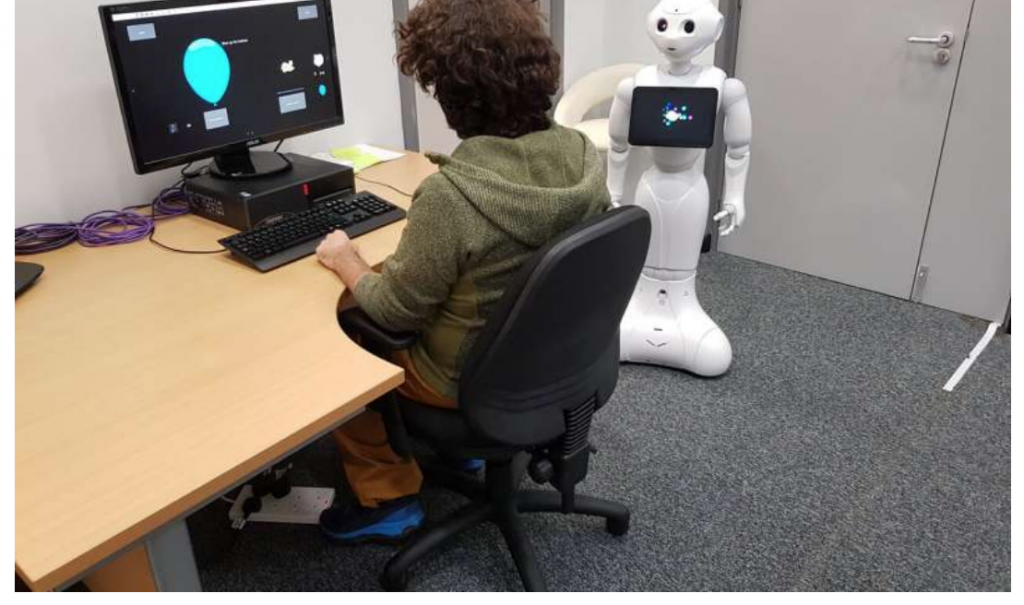
A study using a risk-taking game involving a robot assistant who eggs on the participants leads to riskier behavior. (Source: University of Southhampton)
Behavioral Research Shows How Risk-Taking Increases with a Push by Robots
In a time when many people seek to shift responsibility for their actions on others or circumstances, a paper helps explain some of what drives their behavior involves robots.
According to a story on techxplore.com, new research has shown robots can encourage people to take greater risks in a simulated gambling scenario than they would if they had no other influence on their behaviors. Increasing our understanding of whether robots can affect behavior has clear ethical, practical and policy implications.
Led by Dr. Yaniv Hanoch, Associate Professor in Risk Management at the University of Southampton, the study throws into relief the impact of the influence of technology.
“We know that peer pressure can lead to higher risk-taking behavior,” Dr. Hanoch said. “With the ever-increasing scale of interaction between humans and technology, both online and physically, it is crucial that we understand more about whether machines can have a similar impact.”
Published in the journal Cyberpsychology, Behavior, and Social Networking, the study followed 180 undergraduate students taking the Balloon Analogue Risk Task (BART), a computer assessment that asks participants to press the spacebar on a keyboard to inflate a balloon displayed on the screen. With each press of the spacebar, the balloon inflates slightly, and one penny is added to the player’s “temporary money bank.” The balloons can explode randomly, meaning the player loses any money they have won for that balloon and they have the option to “cash-in” before this happens and move on to the next balloon.
One-third of the participants took the test in a room on their own (the control group), one-third took the test alongside a robot that only provided them with the instructions but was silent the rest of the time. The final, the experimental group, took the test with the robot providing instruction as well as speaking encouraging statements such as, “Why did you stop pumping?”
The results showed that the group that was encouraged by the robot took more risks, blowing up their balloons significantly more frequently than the other groups. They also earned more money overall. There was no significant difference in the behaviors of the students accompanied by the silent robot and those with no robot.
“Dr. Hanoch said, ‘We saw participants in the control condition scale back their risk-taking behaviour following a balloon explosion, whereas those in the experimental condition continued to take as much risk as before. So, receiving direct encouragement from a risk-promoting robot seemed to override participants’ direct experiences and instincts.’ “
Even acetaminophen can make people more likely to take risks because they know they will have minor relief to count on if they overdo it.
The analytics stored by AWS and the AI programming that has been introduced to professional sports has had a significant impact on many aspects of betting on the games as well as predicting the most intricate percentages of plays being completed. It has opened up a range of abilities to analyze everything and then bet on it.
read more at techxplore.com







Leave A Comment